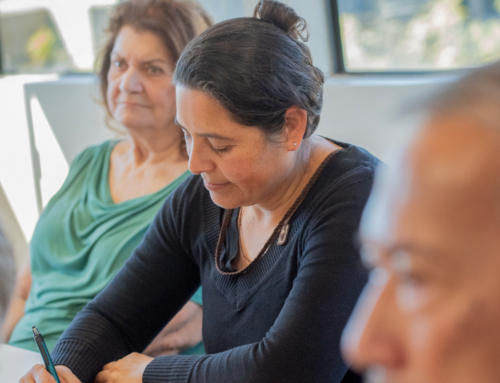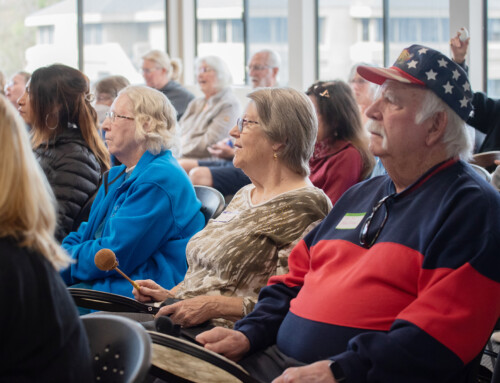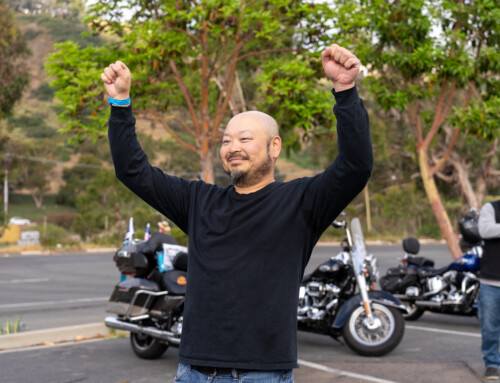Moving your loved one to memory care can be a difficult decision – and transition. From beginning to end, the process can seem overwhelming. You’ll likely encounter dense paperwork, complex considerations, and a variety of emotions. And when the day of the move arrives, the journey is not over.
Alzheimer’s San Diego recently held a class to address this transition called After the Move to Memory Care. President/CEO Eugenia Welch joined Education Director Amy Abrams to debut the new class offering tips for a smooth transition, the realities of residential care, as well as other recommendations for self-care and adjusting to life after the move. Community volunteer and care partner Rob Holmes also presented during the Q&A portion and aided in the creation of this class. He offered his advice and shared his experiences with his wife Joyce, who has lived in residential memory care for the past seven years.
There was a lot to unpack in the classroom of 32 people. Many said this topic couldn’t have come at a better time, as they had either just placed their loved one in memory care or were about to soon. One care partner shared that she is placing her husband in just a few days. She said her Alzheimer’s San Diego support group “family” will be joining her when she takes her husband to the community, and will then take her out for lunch to give her the extra support she needs that day.
Find a Support & Discussion Group in your area
A major takeaway of this class was that communication is key when moving a loved one to a memory care community. By having specific conversations up front, you can help avoid contentions, feelings of resentment, or ultimately having to relocate.
With 25 years of experience in the memory care field, Eugenia emphasized you shouldn’t be shy in asking questions. Memory care communities have strict procedures designed to help protect your loved ones and encourage a smooth transition. Learn about their ability to offer services like hospice, their policies on medications, and mobile therapy and services. Take note of their visitation policies, but understand every assisted living community is different and may not be the option for your person. If you have concerns, make sure you voice them. But also respect what aligns with the culture of that community.
“As a general rule, don’t be afraid to ask anything…but remember that the answer may be No,” Eugenia shared. “Ask yourself if a certain policy is a deal-breaker for you and your family.”
RELATED | Class Recap: Communication Skills
Common questions during the Q&A revolved around what items are appropriate to bring, or if you should even tell your loved one with dementia that they’re moving. Rob suggested staying away from packing jewelry or other valuable clothing items that might be difficult to launder, as staff will try their best, but can only do so much to prevent lost or damaged items. He also recommended not bringing too much stuff for the bedroom, and to stick to familiar items during visits. The community will provide the basics, and investing in brand-new luxury items may not be as important to someone living with dementia.
“It’s about what’s important for her, not for me,” Rob explained.
Throughout the process, a lot of emotions and second-guessing can crop up as a result of these weighty decisions. Amy said the reality is, there is no universal answer for every situation.
“It is inevitable you will deal with feelings of guilt and judgment from others throughout this journey, but avoid ‘shoulding’ on yourself and constantly questioning whether you should have done something different,” she said. “You know your loved one best – trust your instincts.”
All of our classes and workshops are free to the community. Click here for our quarterly education calendar, or call us at 858.492.4400 for more information and support.






